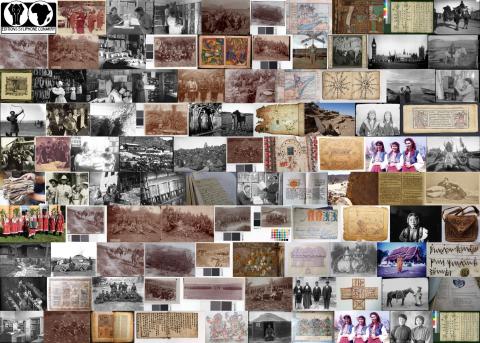
Aims and objectives
Shortly before World War II, ritual manuscripts of Yao people living in the mountains in Southwest China, Vietnam, Laos and Thailand, were briefly documented by several scholars, but then there was a long silence until the early 1970s when scholars “re-discovered” these manuscripts. Scholarship on Yao manuscripts remains rudimentary. Some manuscripts found their way to various collections in Germany, the Netherlands and possibly Japan. Although Yao is a large ethnic group with a population of 2.6 million and geographically distributing in Guangxi, Hunan, Guizhou and Yunnan, there is not a single public collection of Yao manuscripts reported in China. It is impossible to even estimate the quantity of surviving Yao manuscripts.
In previous fieldwork in preserving Yi manuscripts in South Yunnan, a collection of Yao manuscripts was accessed. After checking the physical situation of manuscripts and visiting selected original owners, it is believed that this is an exciting find which will benefit remarkably the study on the social and religious history of Southwest China and mainland Southeast Asia.
Yao manuscripts mainly contain texts used in religious activities on various occasions, including funeral, annual festivals and special rituals for questing fortunes and expelling evils. Yao manuscripts record texts on various subjects but in a relatively standard poetic format, or in few cases, the genre of drama. The texts are read or sang normally by the indigenous priests, termed as shigong in Chinese, accompanied by a couple of female singers in some cases. Since they cover the local knowledge on history, literature, astrology, geography, agriculture and many other subjects, these texts are regarded as the encyclopaedia of Yao people. Yao does not have its own writing, manuscripts thus are written in its spoken language by homophonic Chinese characters or coined characters. It seems that shigong shaman is a family profession succeeding in the patrilineal lineage, therefore Yao manuscripts are preserved in individual families as sort of “secret knowledge” and traditionally it is prohibited to show manuscripts to strangers. Yao manuscripts can be accessed in numbers only when the social changes drive shigong shaman to a marginal status and manuscripts are no longer as cherished. Yao manuscripts are very unique writings which are significant for understanding Yao people, their religion and culture in general.
The extent of the Yao manuscripts is not clear. Previous ethnographic surveys have indicated the existence of Yao manuscripts but no scholar has ever tried to estimate the entire scale. The findings for this project come from Jinping, Lvchun, Yuanyang, Wenshan and Malipo villages along the border betweenYunnan and Vietnam. Their number totals more than 400 volumes so far. In fact, their existence has never been mentioned before. A more thorough survey might reveal more.
The age of most Yao manuscripts is suggested by indirect evidence. Without date marks, Yao manuscripts are dated by their contents, linguistic and material evidence. All manuscripts are written on local-made cotton paper in very bad quality and were used as a daily object by shigong shaman, without any preservation consideration. The average life cycle of a manuscript is less than 50 years. A shigong shaman produces a new copy of manuscript succeeded from his ancestors when needed, and the old one might be burn or buried. So many survival manuscripts are 19th and 20th century copies of texts which could be dated back to the 18th century or earlier.
The Yao manuscripts are endangered in many aspects. Firstly, the quality of the original material and their preservation conditions limit the numbers of Yao manuscripts to the minimum. Secondly, the modernisation process in China after the 1980s also brought dramatic changes to the Yao societies. Most seriously, shigong shaman were marginalised and the indigenous religious activities mostly abandoned. Yao manuscripts were viewed as useless and destroyed at an astonishing speed. Thirdly, smuggling and illegal trading brought further threats.
The project will digitise up to 200 volumes of Yao manuscripts and will establish the first database on this category in China. In order to preserve the original copies of Yao manuscripts in better condition and permanently, matching funds will be sought to relocate these manuscripts to the Archives of the Office of Minority Classics in Kunming. The digital collections will be deposited with the Yunnan Provincial Administrative Office of Minorities Classics in Kunming, Sun Yat-sen University, and the British Library.
Outcomes
Private collections of Yao manuscripts in South Yunnan were surveyed, and selected manuscripts were relocated to the public collection at the Provincial Administrative Office of Minorities Classics in Kunming. 208 volumes were digitised. Copies of the surrogate collection were deposited with Sun Yat-sen University; Yunnan Provincial Administrative Office of Minorities Classics in Kunming; and the British Library.
The records copied by this project have been catalogued as:




